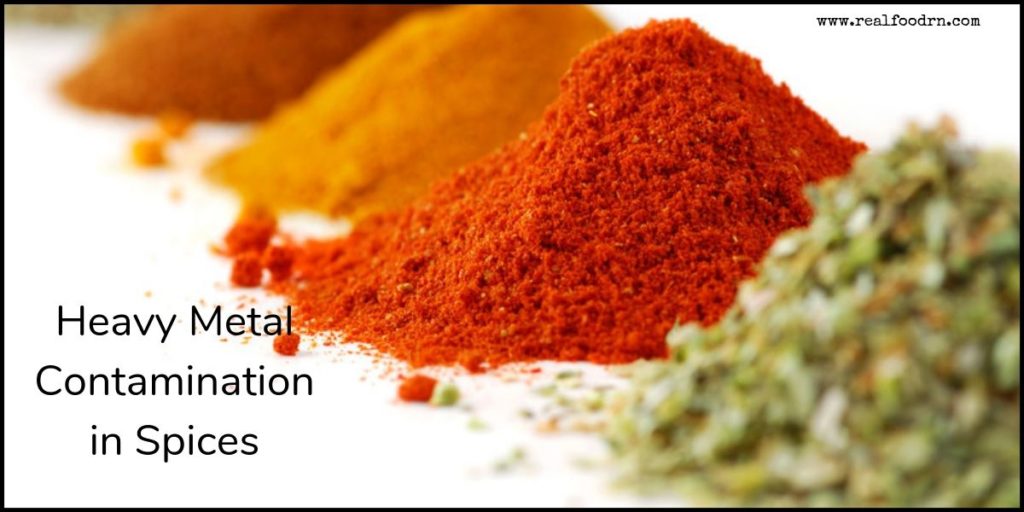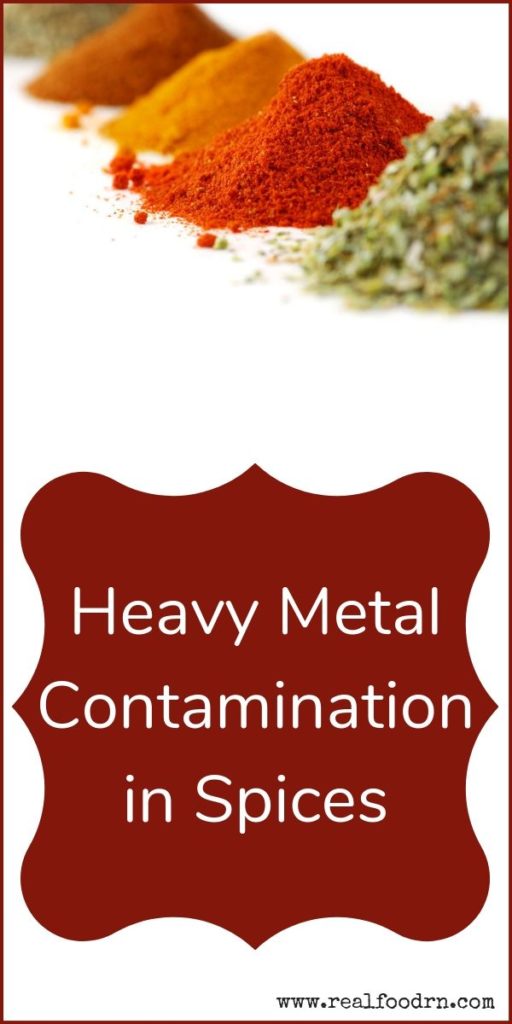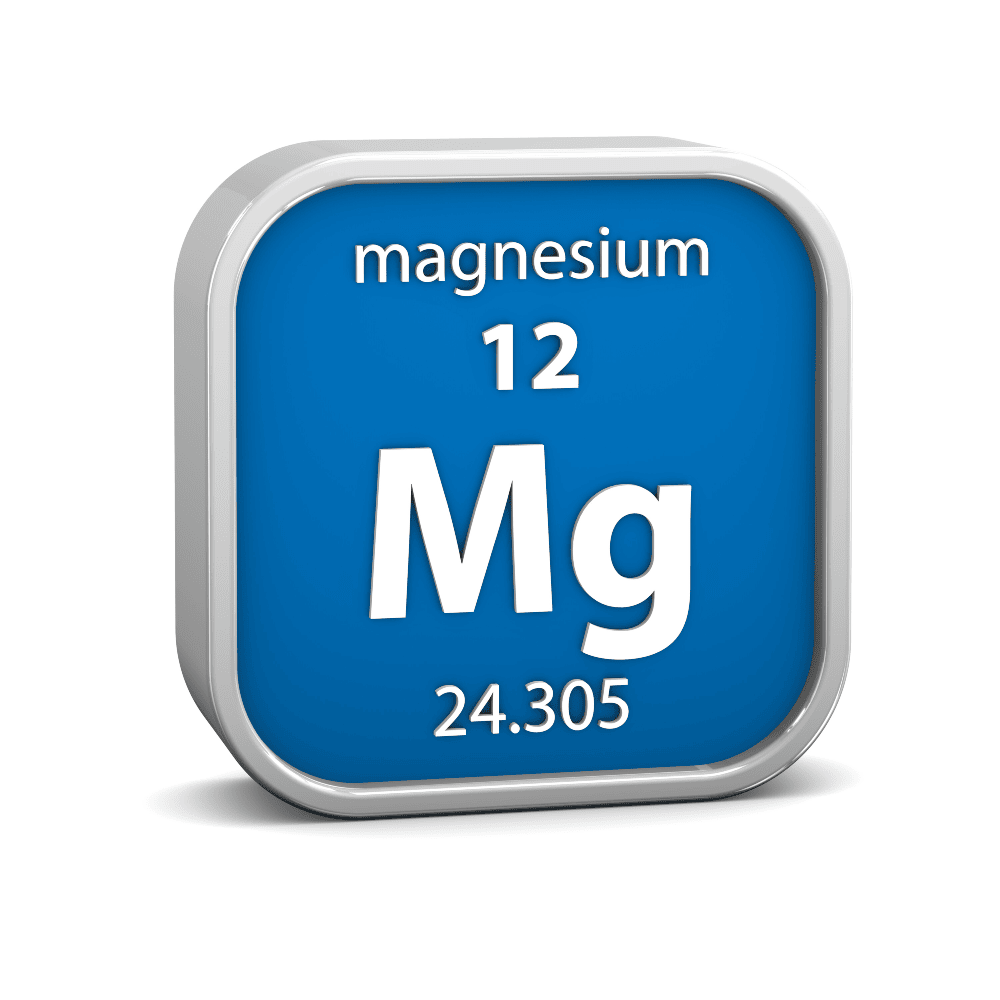
This is part one in a two-part series on the topic of heavy metals in spices. You can find part two HERE
Spices are a great way to add extra zing to your foods, and many are known to be good for your health. Turmeric, for example, is well known for its anti-inflammatory properties, as are ginger and cinnamon. Spices are also high in minerals and antioxidants. Adding tasty spices to your food can help you cut down on less healthy flavor boosters like salt and sugar.
But there is increasing concern that consumers are unwittingly buying spices that also contain high levels of heavy metals. A number of scientific studies have shown that there is widespread contamination of spices, particularly when bought and sold in bulk. The Federal Food and Drug Administration has estimated that twelve percent of spices imported to the US are contaminated. Studies of individual US cities and areas have found even higher rates of contamination.
A 2014 study by Kansas State University found that four out of ten bulk spices bought from farmers’ markets and bulk spice stores in the Kansas metropolitan area were contaminated with heavy metals, as well as mycotoxins and bacteria. Some of the most popular bulk spices, black pepper, thyme, oregano, and turmeric, also tested positive for salmonella.
A long-term study by the New York City Department of Health and Mental Hygiene looked into lead contamination of consumer products. Between 2008 and 2017 researchers tested more than 3,000 products and found that spices sourced from overseas were most at risk of heavy metal contamination. Spices imported from Pakistan, Bangladesh, Nepal, and Morocco had the highest concentrations of lead.
What are Heavy Metals?
Heavy metals are all around us. There are traces of heavy metals like arsenic and lead in the earth, water, and air. Most of the time they occur in such minute quantities that your body can take what it needs without a problem. The human body needs some heavy metals like copper and iron to stay healthy. You may have heard of them referred to as trace elements.
But heavy metals become a problem when they build up in your body and become too much of a toxic load for your body systems to cope with. Most people have heard of arsenic poisoning and thought of murder mysteries, but most heavy metal poisoning happens when you unsuspectingly consume polluted food, water or air. Lead is perhaps the most common environmental toxin that people are exposed to, not just through lead paint and smog, but also through contaminated food, such as imported spices.
There is no safe blood lead level, particularly for children. Even low levels of exposure to lead can affect children’s IQ, attention span and capacity to understand and process information. In adults lead poisoning can cause fertility and reproductive problems, neurological disorders, high blood pressure, problems with concentration and memory, and muscle and joint pain.
Regulation
Currently, food safety regulations do not cover lead contamination in spices. However, spices such as paprika, saffron, and turmeric are often used a natural food coloring. In other products that use spices as coloring, there is a Food and Drug Administration limit of 10 milligrams per kilogram. There is a further stricter regulation for foods that the FDA considers are more likely to be eaten by children, like candy, for which the limit is 0.1 milligram per kilogram.
How Does It Happen?
Contamination with pathogens such as salmonella and other bacteria is more likely to happen due to poor handling processes at the point of sale. Spices may be in open containers such as barrels or boxes that do not have lids and are vulnerable to airborne molds, and contaminants from birds and animals as well as people handling the spices directly and transferring pathogens from their hands.
Are Some Spices Riskier Than Others?
There have been numerous studies, product recalls and import alerts for contaminated spices.
Turmeric is a prime spice of concern. This is not because turmeric is inherently more dangerous but because there is an increasing demand for this spice for use in supplements, powders and as a key ingredient in smoothies, golden lattes and other health foods being promoted through social and other media. Turmeric is fashionable, popular and in greater demand than most other spices.
Chili and paprika are also commonly contaminated.
The 2014 Kansas University study did not find contaminants in bulk ginger and cinnamon, which researchers think may be due to their inherent antioxidant and antimicrobial properties.
What Can You Do?
You can minimize your and your family’s exposure to heavy metals in spices by being an aware consumer. Look out for FDA alerts, don’t buy your spices lose from open containers, and buy pre-packaged spices from reputable companies. I like to buy spices from Thrive Market and on Amazon from a couple of companies: Anthony’s, Starwest Botanicals, and Primal Palate.
As always, it’s up to you as the consumer to take control and make the choices that are right for you. Be aware and choose wisely and you can continue to enjoy the taste and health benefits of spices!
CLICK HERE to Pin this Post

References:
- https://www.newfoodmagazine.com/whitepaper/67589/heavy-metal-contamination-of-red-pepper-spices-and-hot-sauce/
- https://www.sciencedaily.com/releases/2014/05/140516202926.htm
- https://www.refinery29.com/en-us/2014/07/70807/spice-contamination
- https://www.consumerlab.com/answers/how-can-i-make-sure-im-not-getting-lead-in-my-turmeric-supplement-or-spice/turmeric-lead/
- https://www.healthline.com/health-news/can-you-get-lead-poisoning-from-spices
- https://medicalxpress.com/news/2018-11-spices-source-exposure-kids.html
- https://www.bioline.org.br/request?er09029
- https://www.webmd.com/healthy-aging/over-50-nutrition-17/spices-and-herbs-health-benefit
- https://www.consciouslifestylemag.com/heavy-metal-detox-cleanse/









One Reply to “Heavy Metal Contamination in Spices”